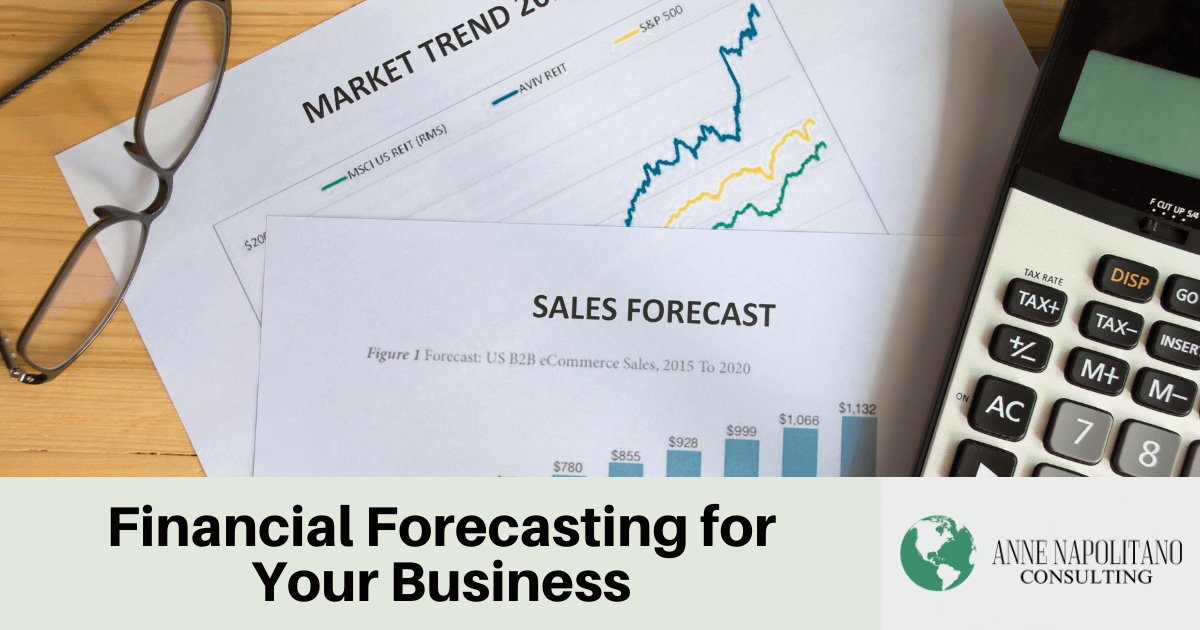 What is financial forecasting? Why is financial forecasting important? How do I create a financial forecast for my business?
What is financial forecasting? Why is financial forecasting important? How do I create a financial forecast for my business?
Whether you’re working to build a multimillion dollar company or you just want to have a sustainable side-hustle, financial forecasting is important to the growth of your business. Financial forecasting helps you see the numbers you need to hit, allowing you to take the necessary steps to make growth happen. Not to mention, if you ever need more funding, you’ll need to have financial forecasts to show that your business is on a trajectory of growth.
If you’re a business owner who’s serious about the growth of your company, then financial forecasting needs to be an integral part of your future.
What is financial forecasting?
Simply put, financial forecasting is using past data to predict how a business will perform in the future. When forecasting, companies analyze past financial performance, current market trends, and other relevant factors to make informed estimates about the future.
Because companies perform financial forecasts for a variety of reasons, there are more than one type of financial forecast. They can be broken down into four main categories:
- Sales forecasting: projecting how many products/services you will sell within the determined fiscal period
- Budget forecasting: predicting the ideal outcome of the budget
- Cash flow forecasting: estimating the flow of cash in and out of the company during the projected fiscal period
- Income forecasting: estimating future income based on past revenue and current growth
Should you do financial forecasting?
The short answer to this question… YES! Financial forecasting is a critical process for company leaders so you can make informed decisions for your business. Otherwise, you’re basically taking a shot in the dark.
There are numerous benefits of financial forecasting including:
- Planning your annual budget
- Setting realistic business goals
- Reducing your financial risk
- Appealing to investors
- Creating strategic business plans
- Taking control of your cash flow
- Developing key performance indicators (KPIs)
- Contingency planning for difficult financial times
- Identifying financial problem areas
- Scaling your financial performance
- Creating an environment of stability
- Determining future financial needs
How to do financial forecasting for your business
Effectively creating a financial forecast for your company may seem like a daunting task. However, it is critical that you regularly conduct a financial forecast with accuracy so that you can make informed decisions about the future of your company.
Here are 7 steps to help you effectively create a financial forecast so that you aren’t left flying blind:
1. Determine the goal
Why are you performing this forecast? What are you looking to learn? You must first determine what you’re looking to get out of this financial forecast before you can begin. Without first knowing where you’re going, you won’t be able to determine how to get there. This step is critical for determining which metrics and factors to consider when creating your financial forecast.
2. Choose your time frame
How far into the future are you wanting to look? Next month? Next year? Financial forecasts can range from short-term to long-term. Most commonly, companies will forecast one fiscal year. Because market trends are constantly changing, it’s worth noting that short-term forecasts are usually more accurate than long-term ones.
3. Gather historical data
Forecasts are based on both past data and current trends, so you must gather the financial statements needed for your forecast. Before having your bookkeeper or bookkeeping software generate your financial statements, make sure that your information is up to date and accurate.
4. Choose a forecasting method
There are two methods of financial forecasting you can use – quantitative and qualitative. Quantitative forecasting involves using exact historical data to make predictions about future trends. Qualitative forecasting makes predictions based on expert opinions and judgments. Each method has its advantages and disadvantages. You must determine which method is best for your situation.
5. Monitor and document results
While highly beneficial, financial forecasts are never 100% accurate. So you need to document and monitor your forecast’s results over time. As internal and external developments occur, it’s important to update your forecast accordingly. Using a forecasting software such as Fathom to automate some of these processes is highly beneficial.
6. Analyze financial data
Regularly analyzing your company’s financial data is the best way to determine the accuracy of your financial forecasts and prepare for future forecasts. By analyzing your company’s financial data, you are able to gain critical insights into the financial health of your company.
7. Repeat the process
Once the determined time period for your financial forecast ends, it’s time for a new forecast to begin. Regular financial forecasting helps you to stay in the know and in control of your company’s finances. In order to create accurate and effective forecasts, you need to continue collecting, recording, and analyzing data on a regular basis.
We’re here to help!
Correctly interpreting the results of your forecast is critical to making effective use of the data. We know that type of analysis can be daunting, even when everything else has been done correctly.
To make the most out of forecasting, we recommend bringing in an expert. We offer Outsourced CFO services that include options for custom forecasting with Certified Fathom Advisors, as well as quarterly analysis reports.
If you’re ready to make your financial data work for you, or want to learn more about the benefits of forecasting, reach out to us for a complimentary call. We want to be partners in your success.
